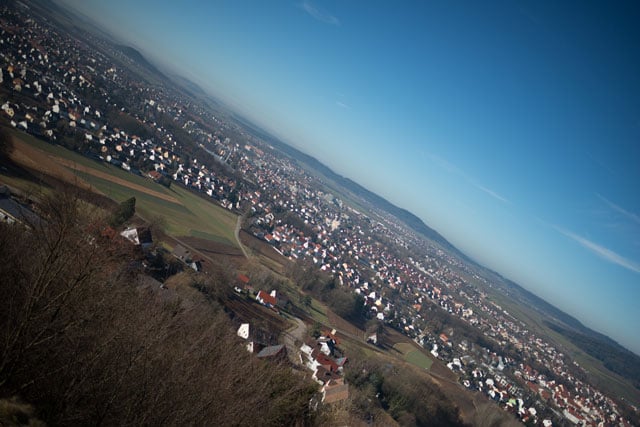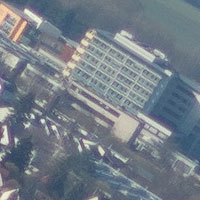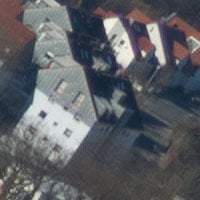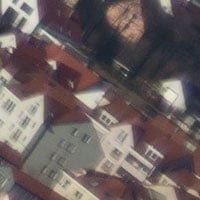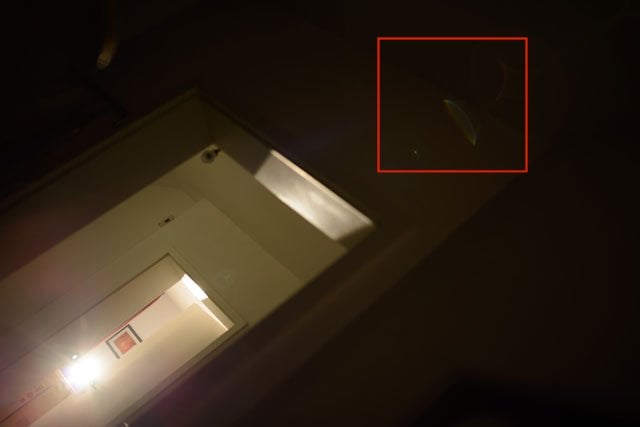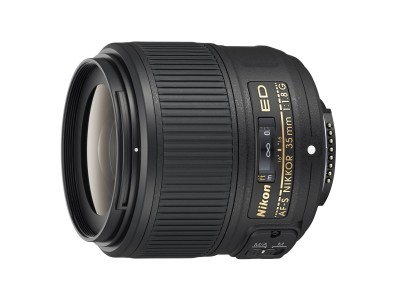Nikon 35mm f1.8G review
-
-
Written by Thomas
Quality
Testing: Longitudinal Chromatic Aberration and focus shift
With lenses offering an aperture of f2.8 or larger I test for longitudinal CA (loCA, a.k.a. “axial color” or “bokeh CA”). The Nikon shows a clear magenta coloration in the foreground (left) and greenish hues in the background (right). By f5.6 the effect is gone. The test also exhibits very little focus shift.
Nikon 35mm f/1.8G Longitudinal Chromatic Aberration (loCA) |
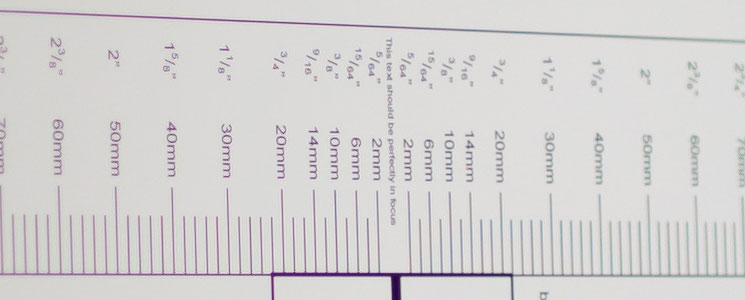 |
| 100% crop, 35mm, f1.8, shot from 1.4m, left = foreground, right = background |
Sharpness and contrast
Let’s have a look at the theoretical performance (MTF-charts) compared to the Nikon AF-S 35mm f1.4G first:
Nikon 35mm f/1.8G versus Nikon 35mm f/1.4G MTF | ||
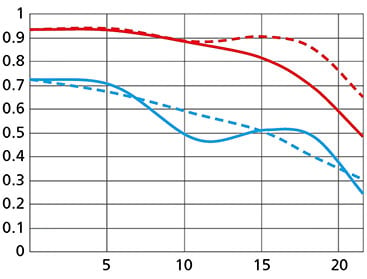 | 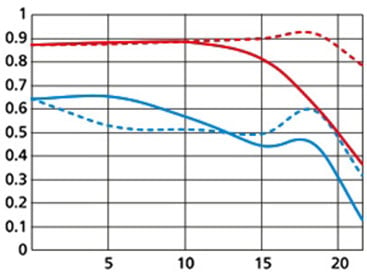 | |
| Nikon 35/1.8G at f1.8 | Nikon 35/1.4G at f1.4 | |
These charts show the lens-performance at the largest aperture. Higher values are better and the closer the dotted and the continuous lines of each color are together the less astigmatism (= resolution depends on the orientation of the test-pattern) the lens has. The x-axis displays the distance from the optical axis (=center of the sensor) in mm. I’ll show you the real-life performance at 4 mm (center), 13 mm (DX-corner), and 20 mm (FX-corner) on a D800.
From the charts the new lens should perform on a level similar to its bigger brother regarding overall contrast and sharpness (contrast with finer details) – and in some cases even surpass it. But you should keep in mind that these charts give the new Nikon 35/1.8G an advantage of 2/3 of a stop because the Nikon 35/1.4G is shown / measured at f1.4. Let’s see how this theoretical performance translates into real life results in the sharpness test based on Siemens-stars – and how the performance increases when you stop this lens down.
What follows are near-center results (first column) followed by DX-corner results and FX-corner results on a D800. The D800 results from the DX-corner should be a very good approximation for performance on a 16MP DX sensor (like the D7000), because the pixel-pitch of both sensors are the same. But differences in the AA-filter and micro-lens-design of a D800 and a D7000 might yield different end-results.
Processing was done in Lightroom 5.3 from RAW at camera standard settings. Noise-reduction is set to 0, sharpening to 70/0.5/36/10, with no extra tone, color, or saturation-adjustment. White-balance was adjusted to a neutral white and I did some exposure compensation to make the brightness match. CA-removal is ON. Focus was optimized for center, DX-corner and FX-corner respectively at f1.8.
The following are all 100% crops!
Nikon 35mm f/1.8G ED with Nikon D800 100% crop from center | Nikon 35mm f/1.8G ED with Nikon D800 100% crop from DX-corner | Nikon 35mm f/1.8G ED with Nikon D800 100% crop from FX-corner | ||
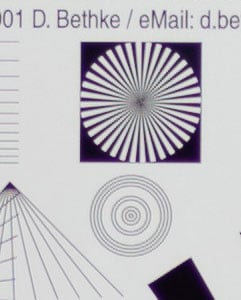 | 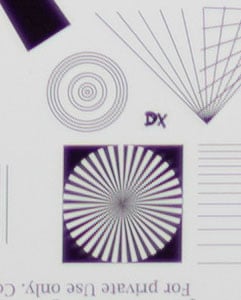 | 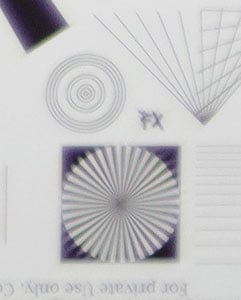 | ||
35mm, f1.8, 100 ISO | 35mm, f1.8, 100 ISO | 35mm, f1.8, 100 ISO | ||
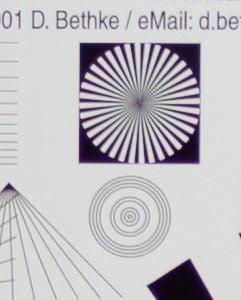 | 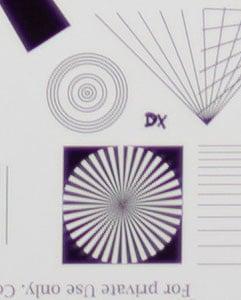 | 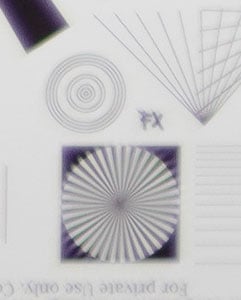 | ||
35mm, f2.0, 100 ISO | 35mm, f2.0, 100 ISO | 35mm, f2.0, 100 ISO | ||
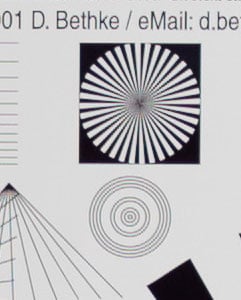 | 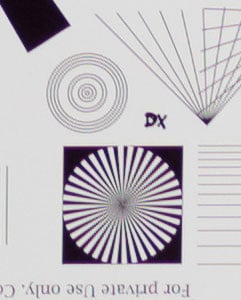 | 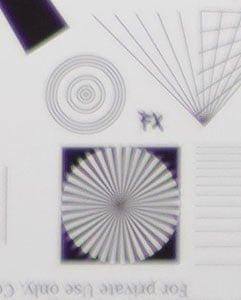 | ||
35mm, f2.8, 100 ISO | 35mm, f2.8, 100 ISO | 35mm, f2.8, 100 ISO | ||
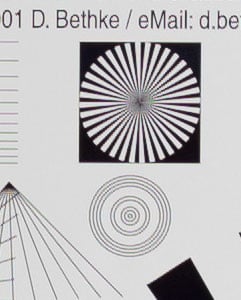 | 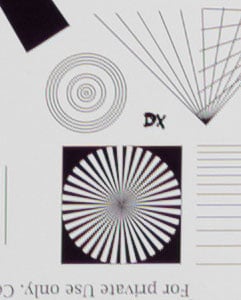 | 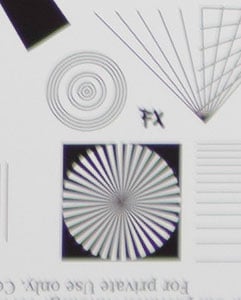 | ||
35mm, f4.0, 100 ISO | 35mm, f4.0, 100 ISO | 35mm, f4.0, 100 ISO | ||
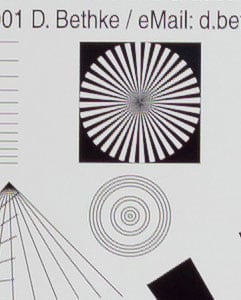 | 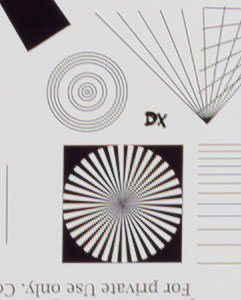 | 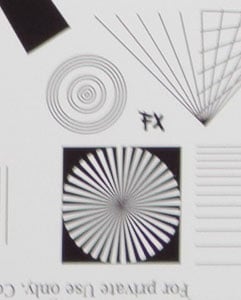 | ||
35mm, f5.6, 100 ISO | 35mm, f5.6, 100 ISO | 35mm, f5.6, 100 ISO | ||
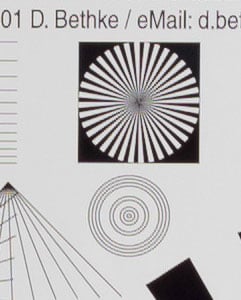 | 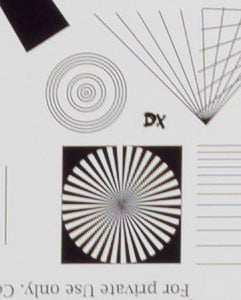 | 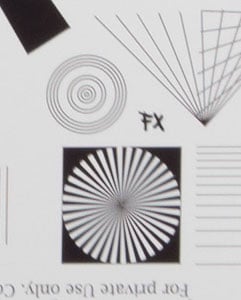 | ||
35mm, f8.0, 100 ISO | 35mm, f8.0, 100 ISO | 35mm, f8.0, 100 ISO | ||
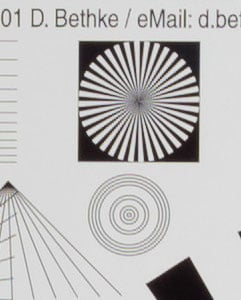 | 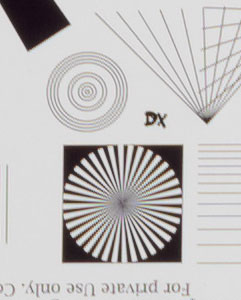 | 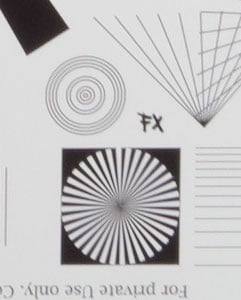 | ||
35mm, f11, 100 ISO | 35mm, f11, 100 ISO | 35mm, f11, 100 ISO |
These 100% crops directly from a 36MP D800 sensor show that this lens is a very good performer in the DX image circle. There is little focus shift to speak of. At the DX-corner the Nikon 35/1.8 shows some field curvature: I had to focus a bit differently from the center to achieve the highest resolution. In the FX-corner the field of sharpest image curves back to where it is at the center, so no special attention is needed here. But overall contrast and resolution of fine details is suffering wide open. The lens also shows strong signs of coma up to f2.8. Unfortunately it takes quite some stopping down to get a clear FX-corner and even at f5.6 there is some strong astigmatism. But keep in mind that these are 100% crops from a 36MP sensor and that the probability that the far corners of a real-life subject are still in the plane of sharpest focus (or even relevant for the image) are pretty slim.
Diffraction is setting in at f11. So better shoot your landscape shots with this lens at f8 if you want the best definition. Distortions are minimal with a slight mustachio form.
Following is a direct comparison to the Nikon AF-S 35mm f1.4G at f2.0:
Nikon 35mm f/1.4G with Nikon D800 100% crop from center | Nikon 35mm f/1.4G with Nikon D800 100% crop from DX-corner | Nikon 35mm f/1.4G with Nikon D800 100% crop from FX-corner | ||
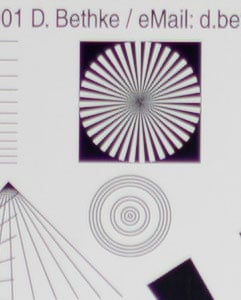 | 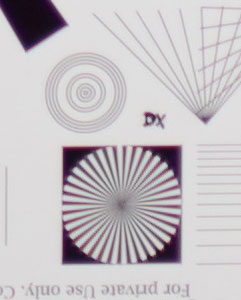 | 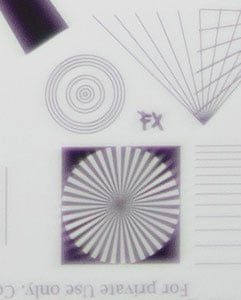 | ||
35mm, f2.0, 100 ISO | 35mm, f2.0, 100 ISO | 35mm, f2.0, 100 ISO |
Nikon 35mm f/1.8G ED with Nikon D800 100% crop from center | Nikon 35mm f/1.8G ED with Nikon D800 100% crop from DX-corner | Nikon 35mm f/1.8G ED with Nikon D800 100% crop from FX-corner | ||
 |  |  | ||
35mm, f2.0, 100 ISO | 35mm, f2.0, 100 ISO | 35mm, f2.0, 100 ISO |
In direct comparison the 35/1.8G is on a par with its bigger brother in the center, delivers a better image quality in the DX-corner wide open, but lags in the FX-corner.
Performance at large distances
The Siemens-star test-targets are shot at a distance of 40x focal length (i.e. at 1.4m). But performance of lenses also depends on the shooting distance. Therefore I do another series of test-shots of a landscape dubbed the “Unremarkables” where you can measure distances in km, not meter. I use this scene to show you how the lenses perform when almost everything is at infinity. I set White Balance to a standard daylight value to make them comparable across lenses shot at the same day and also try to make exposure comparable. There’s no tinkering with vignette-control so you see it here as it is produced by the lens. Focus was manually acquired at the largest aperture in live-view and not changed for other apertures.
You can click on the image to access the large original. Please respect our copyright and only use those images for personal use.
The main image shows the complete scene at f1.8 to give you an impression of the angle of view and to judge vignetting. This is followed by one row of 100% crops at f1.8, f2.8, and f5.6 each from the middle, the DX-corner and the right FX-corner.
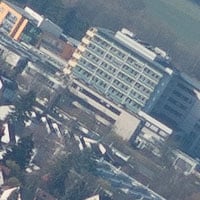 | 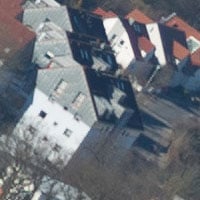 | 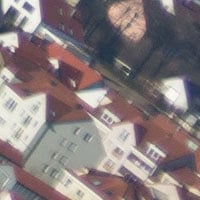 | ||
f2.8, 100 ISO, center | f2.8, 100 ISO, DX-corner | f2.8, 100 ISO, FX-corner | ||
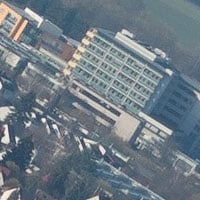 | 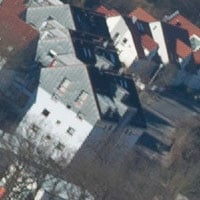 | 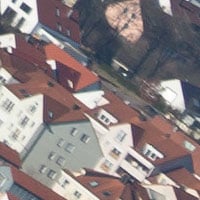 | ||
f5.6, 100 ISO, center | f5.6, 100 ISO, DX-corner | f5.6, 100 ISO, FX-corner | ||
Performance is a bit soft wide open and shows only moderate vignetting. Stopping down to f2.8 improves center performance to a very good level. DX-corner performance is good albeit not as crisp as the center. Performance in the FX-corner deteriorates pretty fast in the last few millimeters of the corner. The FX-crop is taken about 2mm in from the corner which is somewhere in the middle of the transition zone: another 2mm in and you get an image quality that is similar to the DX-corner. Have a look for yourself at the full-resolution images which you can access through the crops above.
Rendering of out-of-focus subjects
This test is for the rendering of point-light sources in the background. The circle of confusion that is produced by this test is pretty indicative of Bokeh performance (in the background) and light fall-off. Ideally the out-of-focus image of the point-light is evenly lit and perfectly circular, with no “onion-rings”, and without coloration. Large aperture lenses normally produce an effect known as “cat’s eye” the further away from the optical axis the point-light is projected. This is due to optical vignetting in the lens barrel when light enters the lens from an angle. For an explanation of this effect have a look over at toothwalker.org.
Nikon 35mm f/1.8G with Nikon D800 50% crop from center | Nikon 35mm f/1.8G with Nikon D800 50% crop from DX-corner | Nikon 35mm f/1.8G with Nikon D800 50% crop from FX-corner | ||
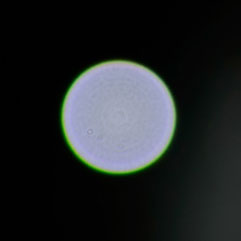 | 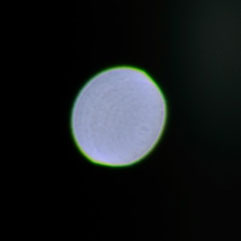 | 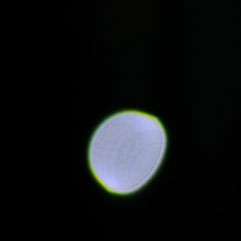 | ||
35mm, f1.8, 100 ISO | 35mm, f1.8, 100 ISO | 35mm, f1.8, 100 ISO |
The Nikon 35/1.8G exhibits almost no onion-rings but a clear green border. There’s also some outlining in the center which morphs into two hot-spots in the corners of the cat’s eyes. This will certainly introduce some nervousness in the background Bokeh. The cat’s-eye effect in itself is not too drastic and the area of the circle in the FX-corner is still about half the area of the circle in the center. That would be a light fall-off of only one stop. By f4 the cat’s-eye effect is almost gone in the FX-corner but by then the lens clearly shows its seven aperture blades. There’s no clipping from the mirror-box of the D800 body like e. g. the Nikon 35/1.4G exhibits. For real-live Bokeh performance head over to the next page.
Flare/ghosting
Shooting normal or wide-angle lenses always runs the risk of catching a strong light-source like the sun shining directly into the lens. This could produce strange colorful ghosts-images or reduce contrast considerably through flare and glare.
The appearance of flare and ghosting depends on factors like the aperture and the angle of the light hitting the lens. So to judge the proclivity of a lens for these artifacts I went through a series of well calculated shots against a strong light source to provoke glare and ghosting (the lens-shade was mounted).
| Flare/Glare: shot with Nikon 35mm f/1.8G at f8 on a D800 |
| 35mm, f1.8, 100 ISO |
The image shows one of the worst flares that I could produce with this lens in the upper right corner – and that is really minimal. Of 22 shots under similar conditions only 3 others showed similar flare and 7 shot produced some even weaker ghosts. There’s little veiling glare in these images and the blacks are black.
Now let’s check out some Nikon 35mm f1.8G ED sample images, or if you’ve seen enough, head over to my verdict.
